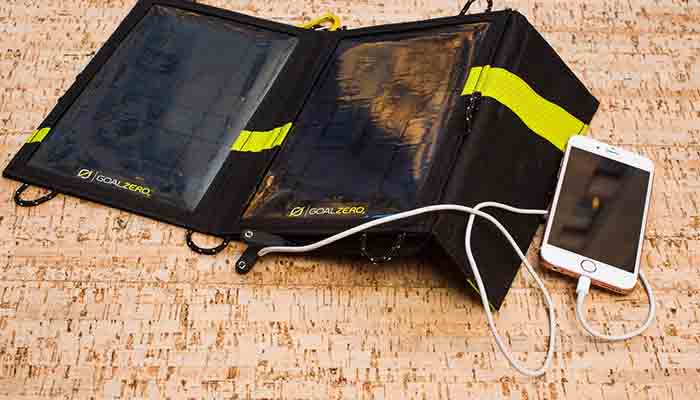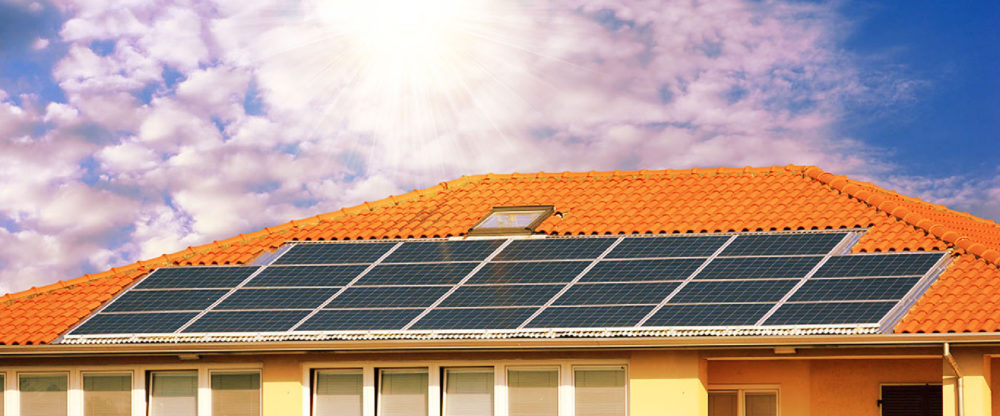4 low-cost ways get solar power at home

https://www.cnet.com/how-to/cheap-solar-energy-at-home/
No need for big solar panels. These inexpensive solutions give you the benefits of solar energy without a big price tag.
id you know that the cost of installing a solar power system for all of your electricity needs can be well over $11,000? Ouch.
But wait, don’t give up on solar just yet! If making your entire home solar is out of your budget, you can still add smaller and less expensive solar elements that help save on electricity. Let’s take a look at the options.
solar lights
There are a multitude of stationary and portable lights that can run on solar power that you can easily add to your home.
Start your solar journey in your yard. I personally have solar walkway lights by my front door and solar twinkle lights decorating my garden. The installation process for these types of lights are pretty simple — you just place the lights where you want them and make sure the solar panel is turned toward the sky.
While lighting your yard, don’t forget about your porch light. For less than $50, you can grab a solar option like the Avaspot Solar Powered Security Light ($20), Gama Sonic Solar Outdoor Wall Lantern ($32) or the ALLOMN Outdoor Solar LED Lamp ($20).

Device chargers
Your phones and tablets need a daily recharge, so why not make the energy source green? Solar power banks, like the Portable Solar Power Bank ($25), the Kiizon Power Bank ($40) or the Anker Solar Charger ($52), come with USB ports that you can use to charge your phone, as well as other small gadgets. The best part is that these banks are portable, so you’re never tethered to a wall outlet.
The downside is that the solar power banks charge your devices slower than a wall outlet does. Luckily the banks can recharge with sunlight during the day and store that energy to charge your devices at night — when you don’t really need them to charge quickly.
No matter which solar-powered charger you choose, look for one that can charge your devices while also recharging itself in the sunlight. Also, check to see how many items it can charge at once and if it protects your device from being overcharged.

25 tips to help you save on your electric bill
Making your kitchen appliances solar
Don’t stop at powering your devices with solar. You can also power your small kitchen appliances — like your coffee maker, toaster, Instant Pot, slow cooker or sandwich maker — without plugging them into a wall. While the monetary savings on your electricity bill will be small, the planet will still benefit from your use of renewable energy. Plus, during blackouts you’ll still be able to cook.
All you’ll need is a 25-watt power bank you can stick in a window and a DC-to-AC inverter to make it happen. The inverter simply plugs into the power bank, so it’s very easy to set up.
If you want an all-in-one solution, Goal Zero makes solar power kits with large storage batteries. It has everything you need to power your small appliance.
Once you have it set up, just plug your small appliance into the power bank. They’ll run just like normal. The only drawback is that that you can only power one appliance at a time, unless you have multiple power banks.
Solar water heaters
Your typical water heater uses around $440 dollars worth of electricity per year. You can save that money by going solar. There are solar water heater kits you can buy for $250 to $1,200, so they pay for themselves very quickly.
Typically, there are three different types of solar water heaters. One thing they all tend to have in common is that they heat the water and then store it in insulated storage systems to keep the water warm until it is needed.
Batch collectors, also called integrated collector storage (ICS) systems, are the oldest types of solar water heaters and they are still popular because they need very little sunshine to heat water and they are simple to install.
You likely already know that anything painted black absorbs sunlight and gets hot quickly. Batch collectors use large black tanks or tubes to collect solar heat to warm the water inside of them.
Flat-plate collector water heaters have a heat absorbing plate that collects heat from the sun, then transfers the heat to copper tubes. As the tubes heat up, so does the water inside them. The plates are usually installed on top of the roof to get the maximum amount of light during the day. The problem with this style of heater is it isn’t as dependable to heat water as consistently as some of the other choices.
Evacuated tube collectors are considered the most productive solar water heaters. Glass or metal tubes full of water or heat transfer fluid are placed inside larger glass tubes, creating a vacuum. In this vacuum, very little heat is lost, so the water is heated very efficiently. Another benefit is it can even be used in outdoor temperatures as low as -40°F, according to the Environmental Protection Agency.
Some things to look for when buying a solar water heater kit are durability and the amount of water the heater can heat up at a time. When it comes to durability, be sure that the any outside components are hail-proof, especially if you’re putting a plate on your roof. For the flow rate, look for heaters that can provide at least 2.1 gallons of hot water per minute.


